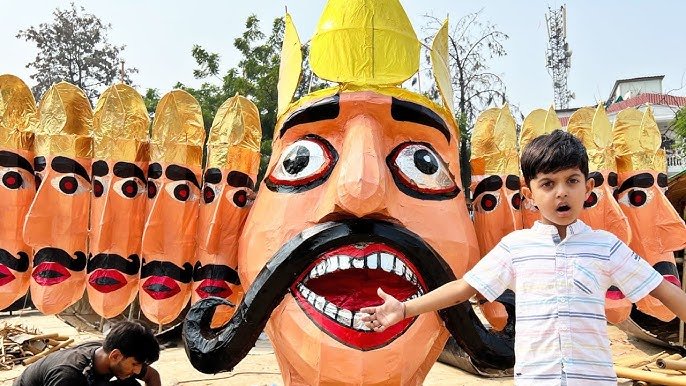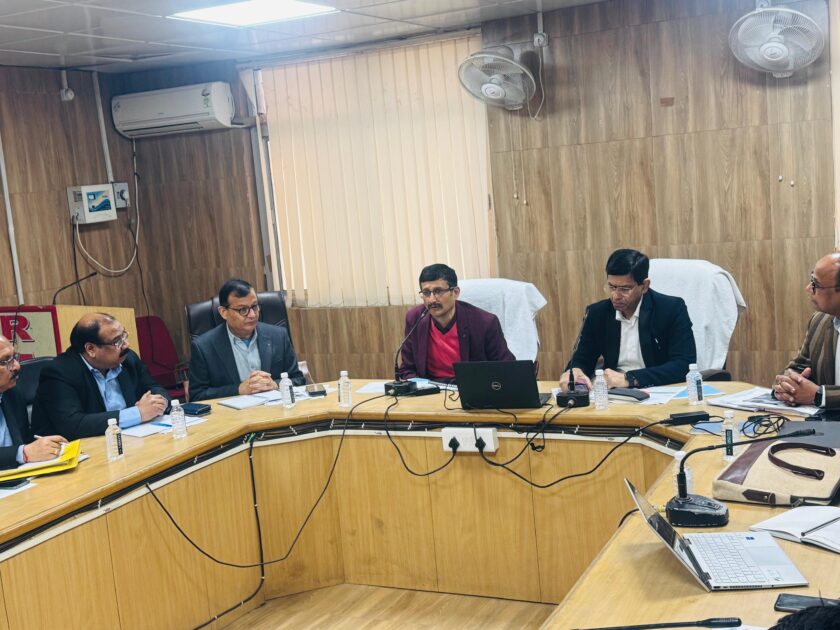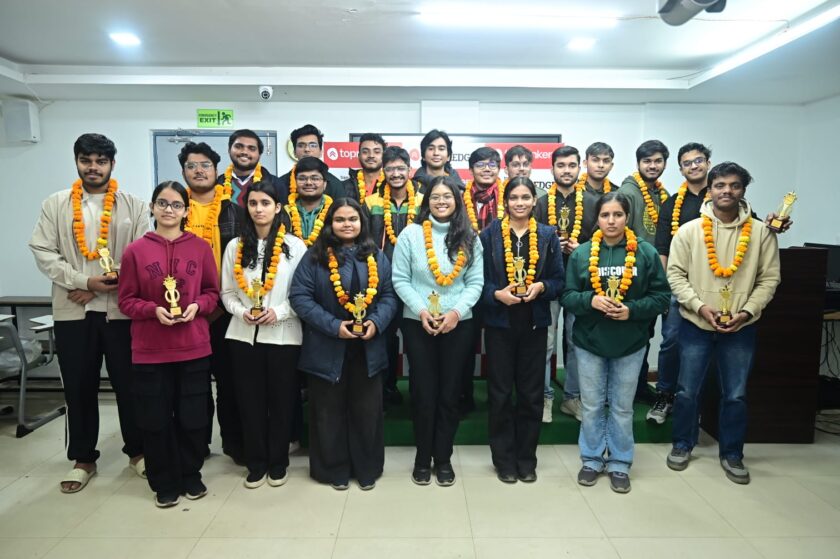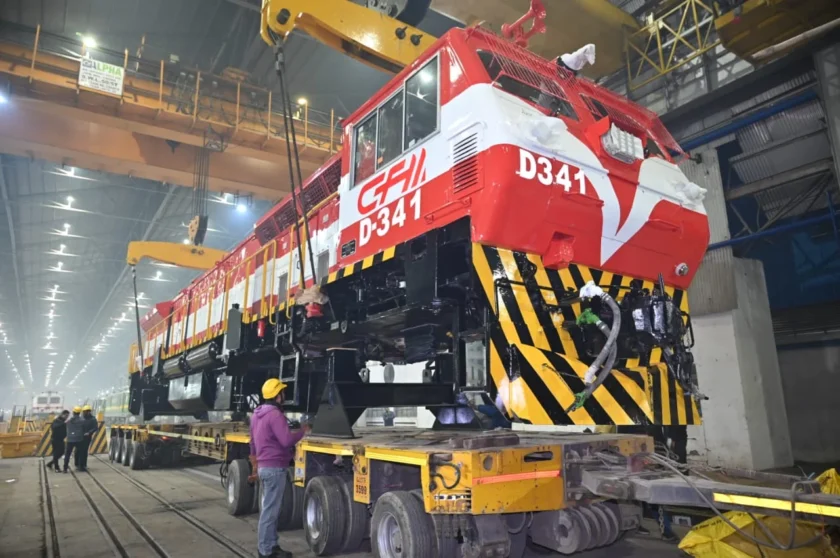Lucknow: The craft of making Ravana effigies in Lucknow is a unique and vibrant tradition that not only symbolizes the triumph of good over evil but also serves as a unifying force, bringing together various communities across the city. This process is especially significant during Dussehra, where the effigies of Ravana, Kumbhakarna, and Meghnath are burned to celebrate Lord Rama’s victory in the Ramayana. In Lucknow, the craft of making these massive effigies is a testament to the city’s Ganga-Jamuni tehzeeb, a culture of inclusivity and communal harmony.
How the Effigies Are Made:
- Artisans and Craftsmanship:
- The making of Ravana effigies is an intricate and time-consuming process that requires skill and patience. Artisans in Lucknow, especially from areas like Chowk, Aminabad, and Husainabad, are known for their craftsmanship in making these towering figures.
- These artisans come from diverse religious and cultural backgrounds, with Hindus and Muslims working together to create the effigies. This cooperation reflects the harmonious coexistence that Lucknow has long been known for.
- The effigies are made primarily from bamboo, paper, cloth, and cardboard. Bamboo is used to create the basic structure or skeleton of the effigy, which is then covered with layers of colorful paper and painted to depict Ravana and his entourage of evil.
- Design and Structure:
- Ravana effigies in Lucknow are known for their elaborate designs and imposing heights, often reaching up to 40 to 50 feet. These effigies are intricately decorated with hand-painted details to give them a fierce and majestic look.
- The ten heads of Ravana are crafted separately, each representing different emotions, vices, and qualities that Lord Rama ultimately triumphs over. Artisans pay special attention to ensuring the effigy looks powerful and menacing.
- In many parts of Lucknow, including Aishbagh Maidan, where the largest Dussehra celebrations take place, the size of the effigies has grown year by year, turning the effigy-burning ceremony into a grand spectacle.
- Traditional Techniques:
- The process of making the effigies follows techniques that have been passed down through generations. Many of the artisans involved in this craft are from families that have been making effigies for decades, if not centuries.
- Bamboo and jute strings are carefully bound together to create a sturdy base, after which layers of colored paper or cloth are attached using natural adhesives. The final touches are added with vibrant paints, often created using organic colors, to enhance the visual appeal of the effigies.
- In recent years, there has been a push towards using more eco-friendly materials, such as biodegradable paper and non-toxic paints, in line with growing environmental concerns surrounding the immersion and burning of effigies.
Unity Through Craft:
- Communal Harmony:
- The effigy-making process in Lucknow is a shining example of how the city’s diverse communities come together. Hindus and Muslims, who may follow different religious beliefs, collaborate to bring these effigies to life. The cooperative effort during this time serves as a powerful message of unity, highlighting how traditions can transcend religious lines.
- This collective effort also emphasizes the mutual respect and shared cultural heritage of Lucknow, where religious festivities like Ramlila and Muharram have long seen participation from multiple communities.
- Economic and Social Bonding:
- Many artisans depend on the making of Ravana effigies for their livelihood, and the industry employs hundreds of workers during the Dussehra season. The craft provides seasonal income for these artisans, many of whom are otherwise engaged in different trades throughout the year.
- Besides artisans, people involved in ancillary trades—such as bamboo suppliers, painters, and clothing vendors—also benefit from this tradition. The festival creates a sense of camaraderie, as people from different socio-economic backgrounds contribute to the grand celebration.
- Shared Festival Experience:
- The burning of the effigies during Dussehra is a city-wide event, with people from all communities attending the celebration. The sight of the towering effigies being set ablaze, accompanied by fireworks and cheers, is a moment of collective joy.
- The Aishbagh Ramlila Maidan, which hosts one of the largest Ramlilas in India, is a gathering spot where thousands of people from all religious backgrounds come together to witness the symbolic burning of Ravana. This act signifies the destruction of evil and the reinforcement of shared cultural values of truth and righteousness.
Cultural Significance of Effigies in Lucknow:
- Preserving Tradition:
- The effigy-making tradition in Lucknow is not just about aesthetics but also about preserving a centuries-old practice. Through the detailed craftsmanship and shared participation, the city ensures that the tradition of burning Ravana’s effigy continues to pass on to future generations.
- The craftsmanship is deeply intertwined with the stories of the Ramayana, and artisans often take pride in their role in representing this epic story through their craft.
- Adaptation and Innovation:
- While the effigy-making tradition is rooted in age-old customs, artisans in Lucknow have adapted over the years to accommodate changes in both design and materials. This includes innovations like using LED lights to illuminate the effigies at night or incorporating mechanical parts to make the effigies more interactive.
- There has also been an increasing focus on making the burning process more environmentally friendly, with discussions on limiting the use of harmful materials and controlling the amount of firework debris produced during the celebrations.
- Symbol of Hope and Victory:
- Ravana’s effigy is more than just a symbol of evil. It represents the vices that plague human life—anger, greed, pride, jealousy, and lust. The burning of these effigies is a powerful reminder of the possibility of overcoming these negative traits, reinforcing hope, and celebrating the ultimate victory of truth and goodness, which transcends cultural and religious boundaries.
The tradition of making Ravana effigies in Lucknow is not only a celebration of Dussehra but also a unique cultural craft that unites communities across the city. Through the collective efforts of artisans and the active participation of diverse communities, the effigy-making tradition showcases the harmony and inclusivity that define Lucknow’s cultural landscape. The blend of craftsmanship, tradition, and community involvement makes this practice a vital part of the city’s identity, keeping the spirit of Dussehra alive in an ever-evolving urban society.






